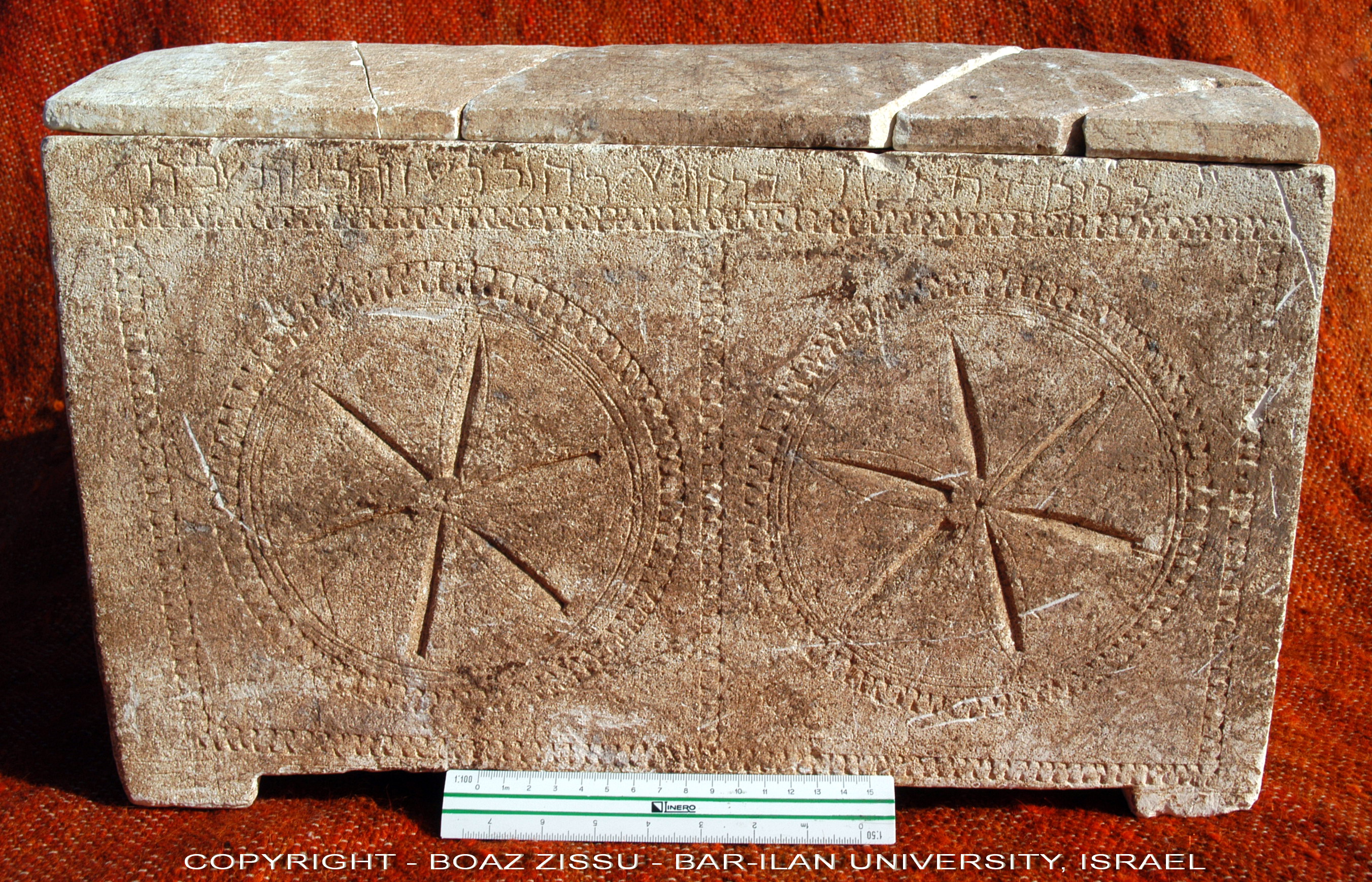
(HT to Joel and Jim West who has the press release.)
“Israeli scholars say they have confirmed the authenticity of a 2,000-year-old burial box bearing the name of a relative of the high priest Caiaphas of the New Testament. The ossuary bears an inscription with the name “Miriam daughter of Yeshua son of Caiaphas, priest of Maaziah from Beth Imri.” An ossuary is a stone chest used to store bones. Caiaphas was a temple priest and an adversary of Jesus who played a key role in his crucifixion. The Israel Antiquities Authority says the ossuary was seized from tomb robbers three years ago and has since been undergoing analysis. Forgery is common in the world of biblical artifacts. The IAA says in Wednesday’s statement that microscopic tests have confirmed the inscription is “genuine and ancient.””
Now the image that was released is tricky to pull anything off of due to its resolution, but I can see enough of the inscription to tentatively say it matches what they say it does. But let me see what I can do…
UPDATE: Here’s what I was able to pull off at first glance:

(Note: Please excuse the typo. Where the illustration is correct, the transliteration should read ישוע not יושע. I’ll post an updated image later. Image updated.)
Of course, this is a bit of “reading into” the inscription on a low-res photo. Once higher-resolution photos are available, I could be completely wrong in portions.
UPDATE: Antonio Lombatti seems to agree with my reading here:
Recita:
מרים ברת ישוע בר קיפא כהן דמעזיה דבית עמריMaria, figlia di Gesù figlio di Caifa sacerdote di Maaziah di Bet ‘Imri
UPDATE: Robert Cargill has a higher-resolution image of the inscription that is much clearer than the image I had to work from and he managed a much better job sketching the text out. 🙂
Peace
-Steve


In the name Yeshua, you mistakenly in the Hebrew inverted the Vav before the Shin, while the original Aramaic has the Shin before the Vav. You have Yosha’ instead of Yeshu’a
Thanks for catching the typo. I was running out the door when I posted it, so I didn’t have time to proof read.
Tonight I’ll post a corrected version. 🙂
Peace,
-Steve
Look at the very last word. If you’re image of the inscription is correct, the last word (the name) is “עמרי” which is ‘Omri’ not ‘Imri’.
The difference between ‘Imri’ and ‘Omri’ is the same as the difference between ‘Aleph’ and ‘Ayin’ (Ayin inspired the Greek Omicron and so is more akin to “O” than “I”).
I’ve written Prof Zissu and he claims the last word (the name) is “אמרי” (with an ‘Aleph’) rather than “עמרי” (with an Ayin). Yet the first letter of the last word looks the same as the middle letter in the word “דמעזיה” in your etches which is most certainly an ‘Ayin’ (when compared to the last letter in “קיפא” which is an Aleph.
If the word contains an ‘Ayin’, the same name “עמרי” appears on the Moabite Stone (also known as Stele of Mésa), starting on line 7. See here (page 11) for the Moabite stone text.
@ἐκκλησία In Hebrew or Aramaic of the time period, “Omri” would probably be spelled with a ו to indicate a long vowel, hence why I (and many others) chose a short vowel to follow the ע. In the same vein, I wouldn’t conflate Moabite orthography with this time period’s orthography.
In either case it’s certainly food for thought. 🙂
Peace,
-Steve
Thanks for your response Steve.
I admit, that I know very little about how long and short vowels were represented during the time period. My comments were more about consistency in use of lettering on this ossuary.
When I look at the middle letter of the word “דמעזיה” I see an ‘Ayin’, and when I look the first letter of the last word I see “עמרי” rather than “אמרי“.
After I posted here, Dr. Zissu wrote me back to say that he spent hours looking at the ossuary at additional detail not apparent in the photograph. It could well be that the word is “אמרי” rather than “עמרי” or that it is not pronounced the way I was suggesting above.
Never-the-less, if the name was spelt using the letters “עמרי“, those letters (as a name) have appeared elsewhere, even if in an Aramaic transliteration of Moabite orthography.
Thanks for the engaging blog.